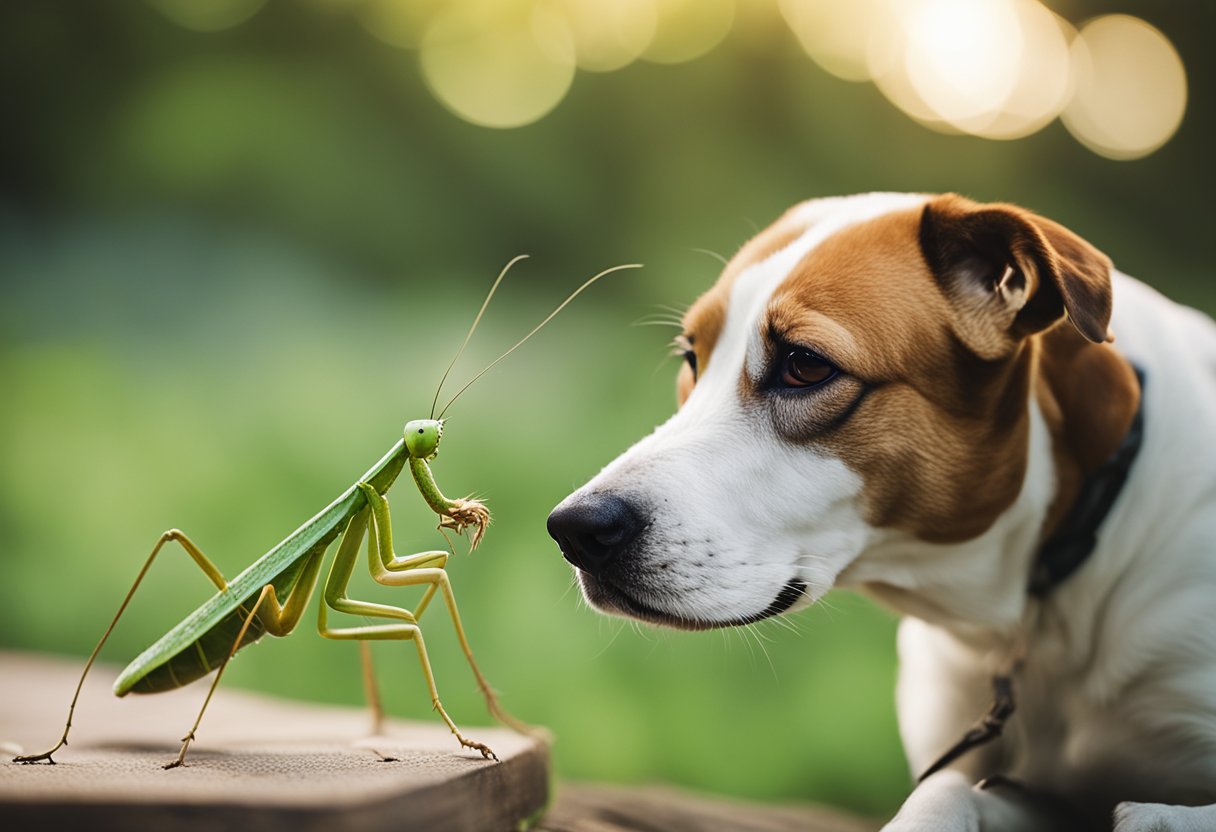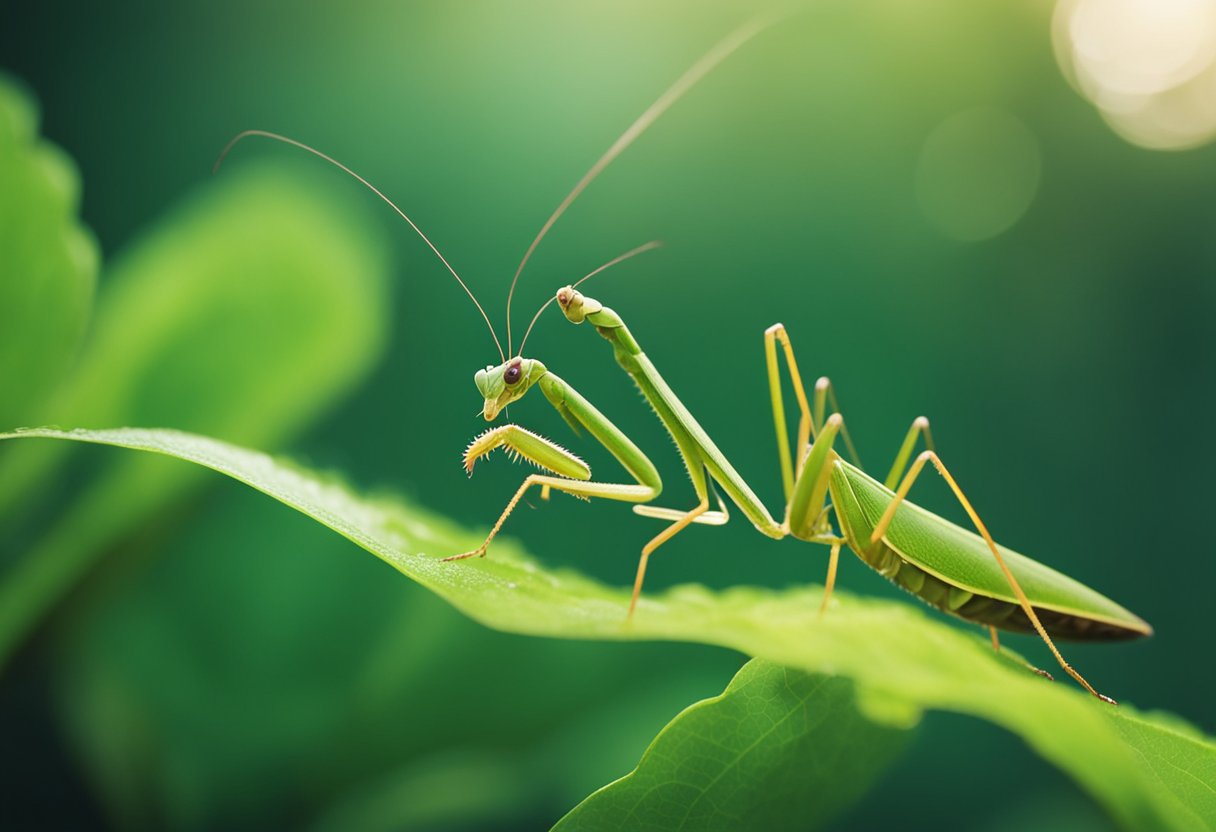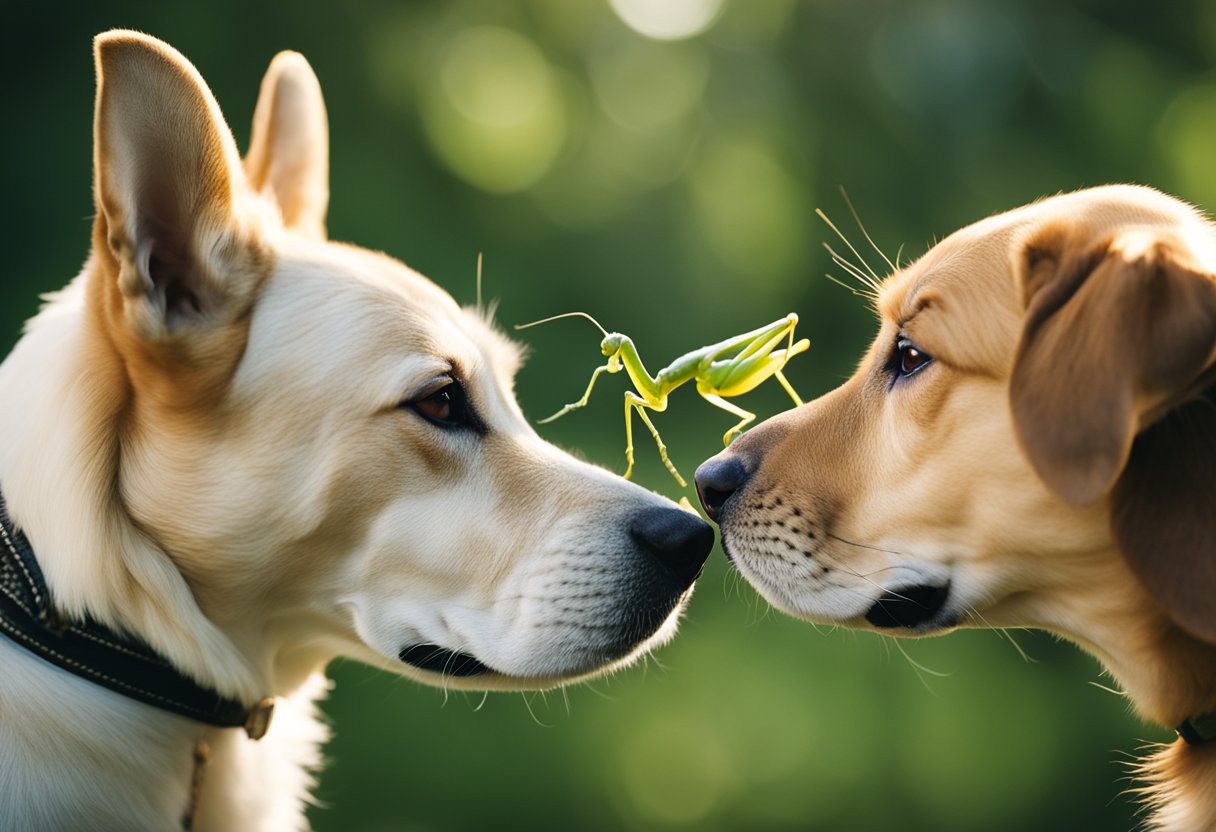As a dog owner, it is important to know what foods are safe for your furry friend to consume. While dogs are known to have a diverse palate, it is crucial to ensure that they are not ingesting anything that may harm their health. One such question that arises among pet owners is whether dogs can eat praying mantis.

Praying mantises are a type of insect that are known for their unique appearance and behavior. While they may be a fascinating sight to behold, it is important to note that not all insects are safe for dogs to consume. In the case of praying mantises, it is generally safe for dogs to eat them, but it is not recommended to feed them to your pet intentionally.
It is important to remember that dogs have different dietary needs than humans, and their digestive systems may not be able to handle certain types of food. Additionally, some insects may carry harmful bacteria or parasites that can cause illness in dogs. As such, it is always best to consult with a veterinarian before feeding your dog any new type of food, including insects like praying mantises.
Understanding Praying Mantis

As a pet owner, it is important to be knowledgeable about the animals your pet may encounter, including insects like the praying mantis. Here, I will provide some basic information about the praying mantis, including its appearance, lifespan, predatory nature, and benefits for gardeners.
Appearance and Lifespan
Praying mantises are insects that are easily recognizable due to their elongated bodies and front legs that are adapted for grasping prey. They range in size from 0.5 to 6 inches, depending on the species. The lifespan of a praying mantis varies depending on the species and environmental conditions, but most live for around 6 months to a year.
Camouflage and Predatory Nature
Praying mantises are known for their excellent camouflage, which allows them to blend in with their surroundings and ambush prey. They are also known for their predatory nature, as they are skilled hunters that feed on a variety of insects, including moths, crickets, and grasshoppers. However, praying mantises are not aggressive towards humans or pets and will only attack if they feel threatened.
Beneficial Insect for Gardeners
Praying mantises are considered beneficial insects for gardeners, as they feed on a variety of pests that can damage plants. They are also an important part of the food chain, providing a food source for birds and other predators.
In conclusion, praying mantises are fascinating insects that play an important role in the ecosystem. While they may be intimidating to some, they are generally harmless to humans and pets. As a pet owner, it is important to be knowledgeable about the animals your pet may encounter, including insects like the praying mantis.
Dogs and Praying Mantis Interaction

As a dog owner, I am always concerned about what my dog eats. One of the questions that came to my mind was whether dogs can eat praying mantis. In this section, I will discuss the interaction between dogs and praying mantis and answer this question.
Encounter and Potential Harm
Dogs and praying mantis can encounter each other in the wild or even in your backyard. While praying mantis are not harmful to humans, they can be dangerous to dogs. Praying mantis have sharp spines on their front legs that they use to catch and kill their prey. If a dog tries to eat a praying mantis, these spines can get stuck in the dog’s mouth or throat, causing injury or even death.
Therefore, it is best to keep your dog away from praying mantis to avoid any potential harm.
Defensive Behavior of Praying Mantis
Praying mantis have a unique defensive behavior that they use to protect themselves from predators. When threatened, they will stand tall and spread their wings to make themselves look bigger. They will also sway back and forth, making it difficult for predators to catch them.
If a dog tries to attack a praying mantis, the praying mantis will try to defend itself by using its sharp spines or by biting the dog. This can cause injury to the dog, especially if the praying mantis is large.
In conclusion, dogs should not eat praying mantis as it can be harmful to them. It is best to keep your dog away from praying mantis to avoid any potential harm. If you notice that your dog has eaten a praying mantis or is showing signs of injury, take them to the vet immediately.
Can Dogs Eat Praying Mantis
As a dog owner, it is essential to know what your furry friend can and cannot eat. One of the questions that may come to mind is whether dogs can eat praying mantis.
Ingestion and Its Effects
Praying mantises are carnivorous insects that feed on other insects, including crickets, moths, and flies. While they are not toxic to dogs, it is not recommended to feed praying mantis to your dog. The exoskeleton of the praying mantis can be difficult for dogs to digest, leading to gastrointestinal issues such as vomiting and diarrhea. Additionally, the sharp claws of the praying mantis can cause injury to the mouth and throat of your dog, leading to discomfort and pain.
Safety Measures for Owners
To ensure the safety of your dog, it is best to prevent them from eating praying mantis. Keep your dog on a leash when outside to prevent them from coming into contact with praying mantis. If you suspect that your dog has ingested praying mantis, monitor them for any signs of gastrointestinal distress, such as vomiting and diarrhea. If your dog shows any signs of discomfort or pain, contact your veterinarian immediately.
In conclusion, while praying mantis is not toxic to dogs, it is not recommended to feed them to your furry friend. The exoskeleton of the praying mantis can be difficult to digest, and the sharp claws can cause injury to the mouth and throat of your dog. As a responsible dog owner, it is essential to keep your dog safe and prevent them from ingesting harmful substances.
Health Implications for Dogs
As a dog owner, you may wonder if it is safe for your furry friend to eat a praying mantis. While praying mantises are not toxic to dogs, there are potential health implications that you should be aware of.
Physical Symptoms
If your dog ingests a praying mantis, they may experience physical symptoms such as vomiting or diarrhea. These symptoms are generally mild and should resolve on their own within a day or two. However, if your dog experiences severe symptoms or if they persist for more than a few days, it is important to consult a veterinarian.
Gastrointestinal Problems
Ingesting a praying mantis can also cause gastrointestinal problems in dogs. The sharp legs and wings of the mantis can cause irritation or damage to the lining of the digestive tract. This can lead to inflammation, pain, and discomfort for your dog. If you notice your dog experiencing difficulty or discomfort when trying to eat or pass stool, it is important to consult a veterinarian.
Consulting a Veterinarian
If you suspect that your dog has ingested a praying mantis, it is important to monitor them closely for any signs of illness or discomfort. If you notice any physical symptoms or gastrointestinal problems, it is important to consult a veterinarian. Your veterinarian can help diagnose and treat any potential health issues and provide guidance on how to keep your dog safe in the future.
In conclusion, while praying mantises are not toxic to dogs, they can cause physical symptoms and gastrointestinal problems if ingested. If you suspect that your dog has ingested a praying mantis, it is important to monitor them closely and consult a veterinarian if necessary.
Conclusion
After conducting thorough research and reviewing the available information, I have come to the conclusion that it is not recommended for dogs to eat praying mantises.
While there is limited evidence regarding the potential harm of a dog consuming a praying mantis, it is known that mantids can be toxic to some animals. Additionally, the sharp spines on the mantis’s legs and body could potentially cause harm to a dog’s digestive tract or mouth.
Furthermore, dogs are not natural predators of praying mantises and may not be able to digest them properly. It is important to remember that dogs have different dietary needs than other animals and should be fed a balanced diet that meets their specific nutritional requirements.
In summary, while there is not enough conclusive evidence to definitively say whether or not dogs can eat praying mantises, it is best to err on the side of caution and avoid feeding them to your furry friend. If you suspect that your dog has ingested a praying mantis or any other potentially harmful substance, it is important to contact your veterinarian immediately.






